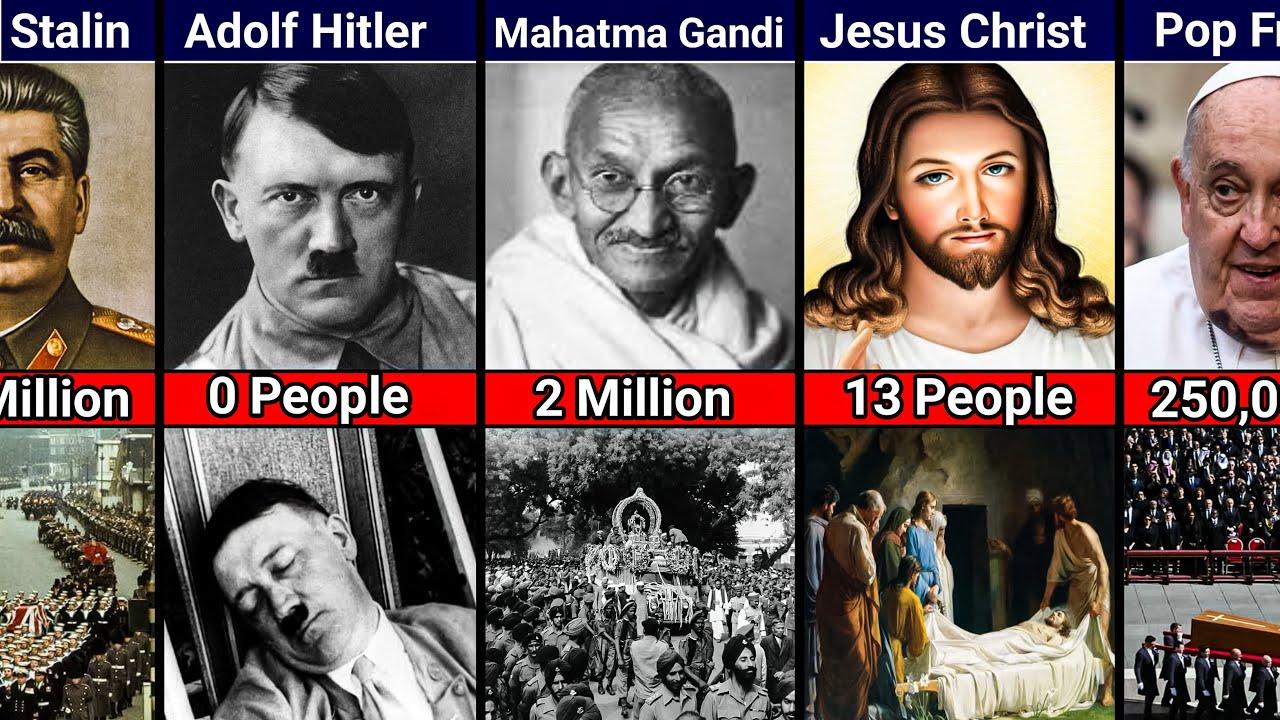Funerals of famous figures have long drawn crowds that reflect not just grief, but historical importance, cultural influence, and sometimes even political symbolism. From ancient processions to globally televised ceremonies, the number of mourners at these events often tells as much about the person as their legacy. Spanning centuries, here’s a look at how people gathered to say goodbye—from Jesus Christ to global icons like Pope Francis.

Though exact numbers are impossible to verify, the funeral of Jesus Christ is historically believed to have been attended by only a small group of followers—perhaps a few dozen at most. In contrast, his crucifixion attracted crowds in Jerusalem, and over time, his death became one of the most remembered and symbolically observed in human history, commemorated annually by billions.
In more modern times, some funerals have seen staggering public turnout. The funeral of Mahatma Gandhi in 1948 drew an estimated 2 million people along the procession route in India. Similarly, the 1965 funeral of Winston Churchill was attended by global leaders and followed by millions via broadcast. Princess Diana’s 1997 funeral, watched by over 2.5 billion people worldwide, drew over a million mourners into the streets of London.
Among religious leaders, Pope John Paul II’s funeral in 2005 was one of the largest gatherings in modern history, with over 4 million people in Rome and 2 billion viewers globally. If and when Pope Francis passes, his funeral is expected to draw similar or even greater numbers, given the Catholic Church’s global presence and his popularity as a reformist pontiff.
Ultimately, funeral attendance reflects the public’s emotional connection to the individual—whether spiritual, political, or cultural. From intimate gatherings to mass mobilizations, these final farewells often become moments of collective memory and historical reflection—reminding us of the profound impact one life can have on the world.